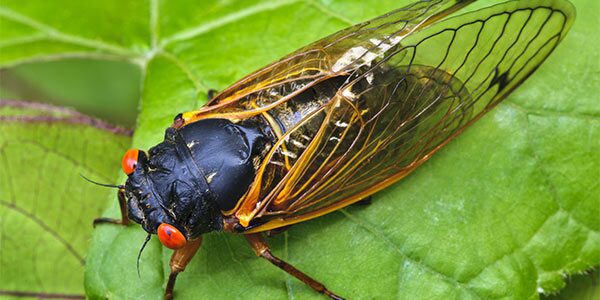
Photo courtesy of The National Wildlife Federation.
As the temperature rises towards late May, the first cicadas are expected to rise from their underground slumber. With their emergence comes the relentless buzzing of male cicadas as they seek out mates can reach volumes louder than a passing airplane, disrupting outdoor activities and even conversation.
This upcoming event is particularly extraordinary, as a trillion cicadas from two distinct broods are set to emerge in the Midwest and Southeast regions of the U.S. come the beginning of summer, signaling what is known as a dual emergence.
Amidst the anticipation, Dr. Dennis Tarasi, esteemed biologist, and professor at St. Ambrose University, offered some insight on what ways cicadas positively impact the environment, “Cicadas primarily consume sap from trees, most of which survive relatively fine. They are also regularly consumed by lots of different predators like bats, birds, spiders and even fish!” The periodic emergence of cicadas can contribute to predator population cycles.
Eastern Iowa is in position to bear a portion of the cicada emergence. In the Quad Cities specifically, we’re on the Northeast edge of the range, whereas Southeast Iowa and Northeast Missouri will have much higher densities.
Contrary to common misconceptions, Dr. Tarasi reassures that the impending cicada emergence won’t result in a large-scale plague where everything gets eaten, “Cicadas don’t eat leaves, so most of the plants will be just fine. The big issue will be the noise! It will be loud many spring and summer nights, as their song is how they communicate, especially with mates.”
As the countdown to it continues, the conversation among students and faculty at St. Ambrose University mirrors the buzz of cicadas themselves – though with a touch more apprehension than excitement.
Blake Bohon, a junior at SAU, shares the feelings of many, “This sounds terrible. I hate the noise cicadas make, and I worry about them covering the sidewalks too; it’s so gross to step on their molted skins.” For some students, the impending arrival of cicadas marks an entirely new experience. Reflecting on his lack of exposure to cicadas in Wisconsin, he remarks, “I didn’t know what a cicada was until I came to St. Ambrose…Based on what I’ve heard, I’m not very excited about this.”
However, not all students share Blake’s apprehension. Some, like SAU Junior Hailey Venhuizen, view the cicada emergence as an intriguing event of nature. “I’m actually excited to see the cicadas,” she shares. “It’s a rare chance to witness nature in action, plus they play an important role in the ecosystem.”
While student perspectives vary, Dr. Tarasi humorously admits to adopting a more cautious approach. “I’ll have a lot of fun looking at the cicadas’ molted exoskeletons left on our trees with my young kids, but otherwise, I’ll be sleeping with an extra pillow over my head!”
As the temperature rises towards late April, the first cicadas are expected to rise from their underground slumber. With their emergence comes the relentless buzzing of male cicadas as they seek out mates can reach volumes louder than a passing airplane, disrupting outdoor activities and even conversation.
Despite differing opinions, the cicada emergence presents a unique opportunity for students to engage with the natural world. Whether met with curiosity or annoyance, one thing remains certain: the impending arrival of these winged creatures will leave a lasting impression on the campus and those who inhabit it.
Marin Tadrus is a staff writer for The Buzz.


